Bologna travel guide: Things to do in Bologna
The capital of the Emilia-Romagna region in Northern Italy, Bologna has deep roots with it history dating back to Etruscan times. Today, it’s an important agricultural, financial, industrial and transport hub with many large Italian companies choosing it as a base for their headquarters. It’s perhaps not surprising therefore that Bologna is one of Italy’s wealthiest cities. It’s also home to the oldest university in the world established in AD 1088 and has a well preserved historic centre.
But, what is there to see and do if you’re a holidaymaker visiting the city? Check out our Bologna travel guide to find out what to see and do in Bologna.
1. Climb the leaning tower
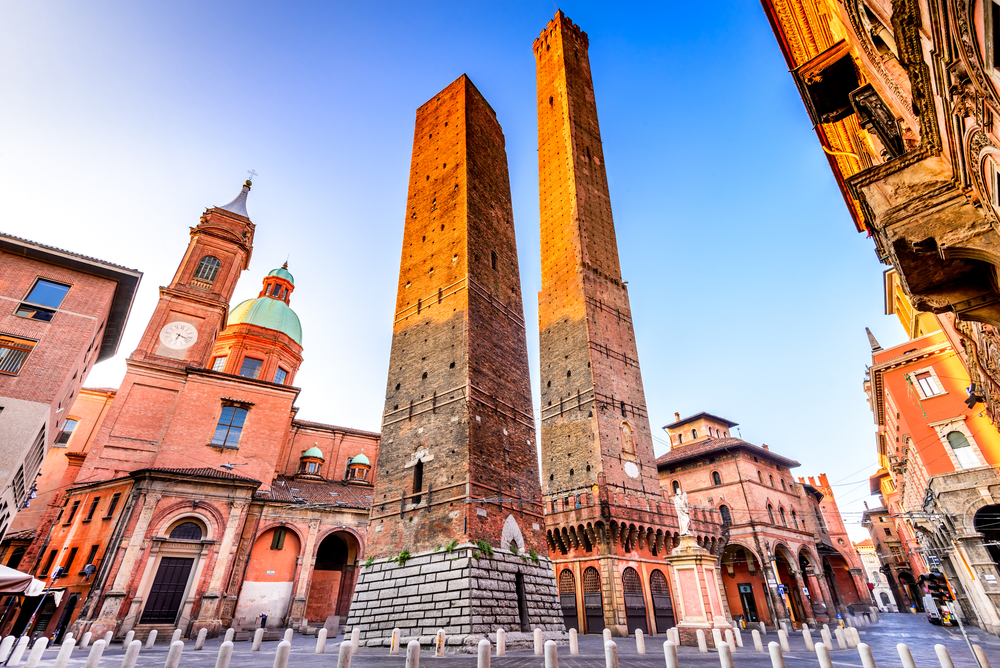
Pisa isn’t the only city to boast a leaning tower! In fact, Bologna has not one but two of them! Located in the heart of the city, the Due Torri are two Medieval towers. Standing at 97.2 metres tall, and built between 1109 and 1119, the Torre degli Asinelli is the tallest tower of the two and can actually claim to be the highest leaning Medieval tower in the world. Climb the 498 steps to get to the top and admire the wonderful views over the whole of the city. The smaller of the two towers is the Garisenda tower. At just 48 metres tall, it nevertheless has a rather noticeable lean!
2. Stroll around the Piazza Maggiore
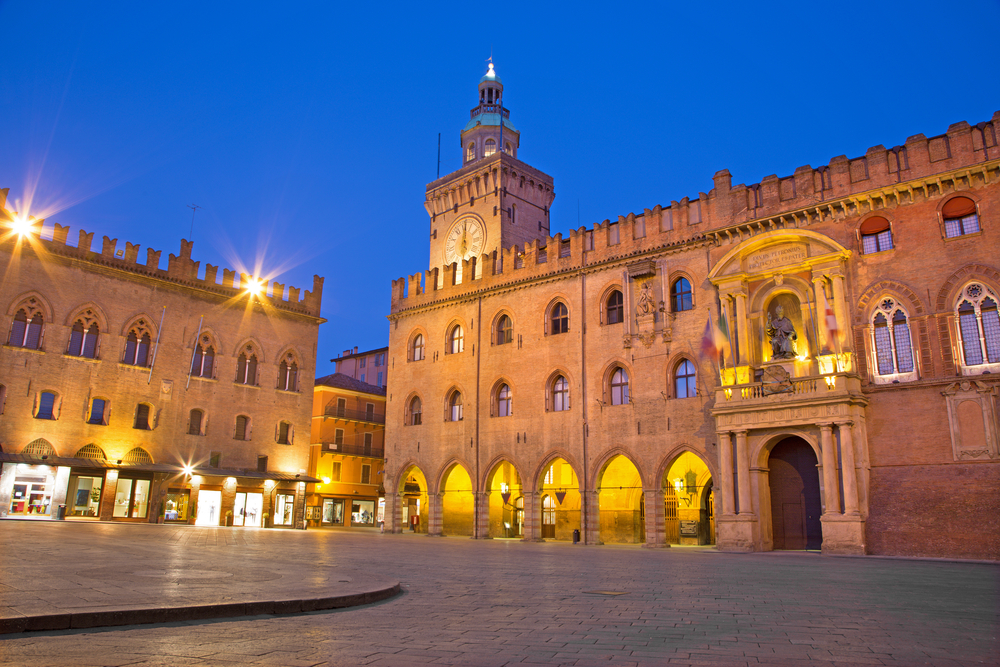
Bologna’s central piazza, the Piazza Maggiore is home to a number of beautiful buildings including the Basilica of San Petronio, the Palazzo dei Notai, the Palazzo d’Accursio, the Palazzo dei Banchi and the Palazzo del Podesta. The Basilica di San Petronio is our favourite of these and is an impressive, but unfinished building that has no fewer than 22 side chapels. The piazza is also the perfect spot to enjoy an evening apertivo.
3. Take a trip to the San Luca Monastery
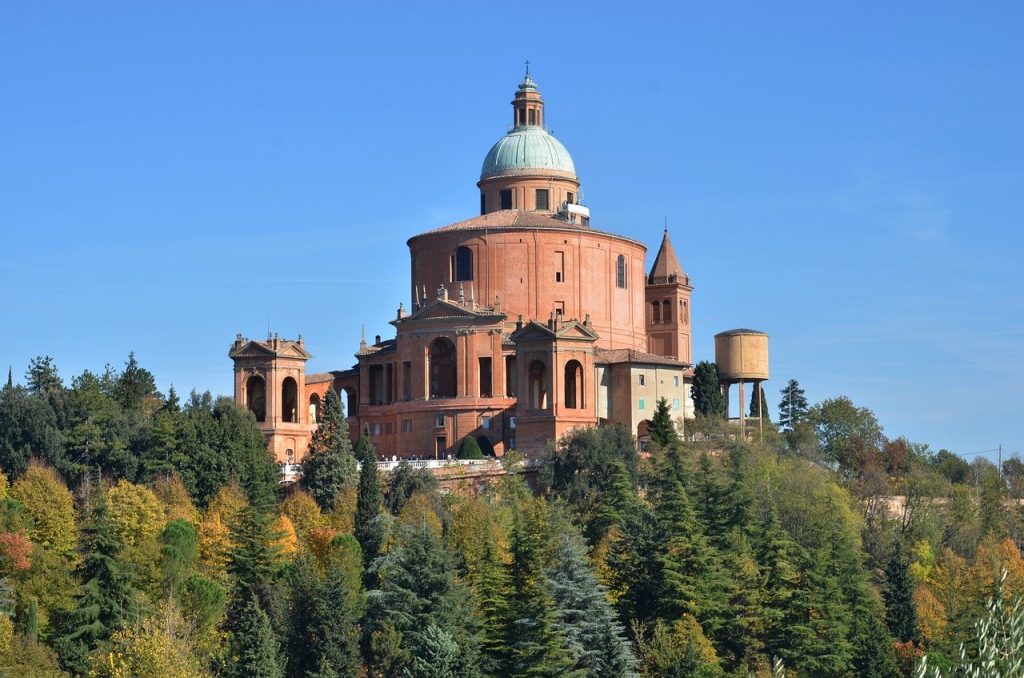
One of Bologna’s most famous landmarks, the San Luca monastery sits 300 metres above sea level and looks down over the city below. To reach it, we recommend walking the 4km uphill path from the city under the 666 arches of the Portico San Luca, the longest portico in the world. Starting from the Porta Saragozza, the route is initially flat but starts to climb uphill when you reach the Arco del Meloncello. However, if you prefer there is the easy option to choose the San Luca Express tourist train instead which runs from the heart of the city in the Piazza Maggiore. You can always choose to walk back downhill afterwards!
Whilst there, make sure you enjoy the views to the city below. The best views are definitely to be enjoyed from the rooftop of the church, accessed via a narrow spiral staircase for a small additional charge.
4. Stroll under Bologna’s porticoes
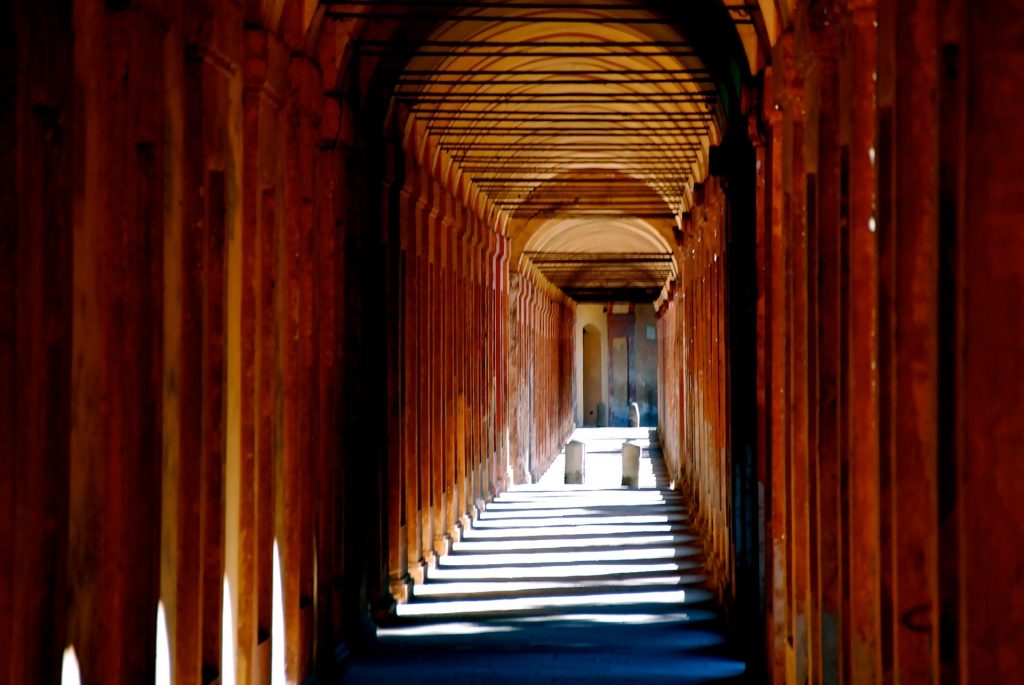
Bologna has an incredible 40 km of covered porticoes to discover. The portico that leads from the city to the San Luca is the longest and most famous but there are porticoes that jut out of almost every building in the heart of the city. Originally intended to create additional living space in the Middle Ages, you’ll now find they’re a perfect way to avoid the rain whilst sightseeing or even to escape from the heat of the sun.
5. Admire the Neptune Fountain

Nestled next to the Piazza Maggiore is the Neptune Fountain. Approved by Pope Pius IV, the Renaissance fountain was designed and built by architect Tommaso Laureti and sculptor Giambologna in the 16th century. The fountain has a figure of Neptune, god of water, in the middle surrounded by groups of dolphins, mermaids, cherubs and coats of arms. The figure of Neptune was chosen due to the importance of water – Bologna was an important port and canals ran through the city and, that time, water meant power and riches.
6. Visit the Archiginnasio and Teatro Anatomico
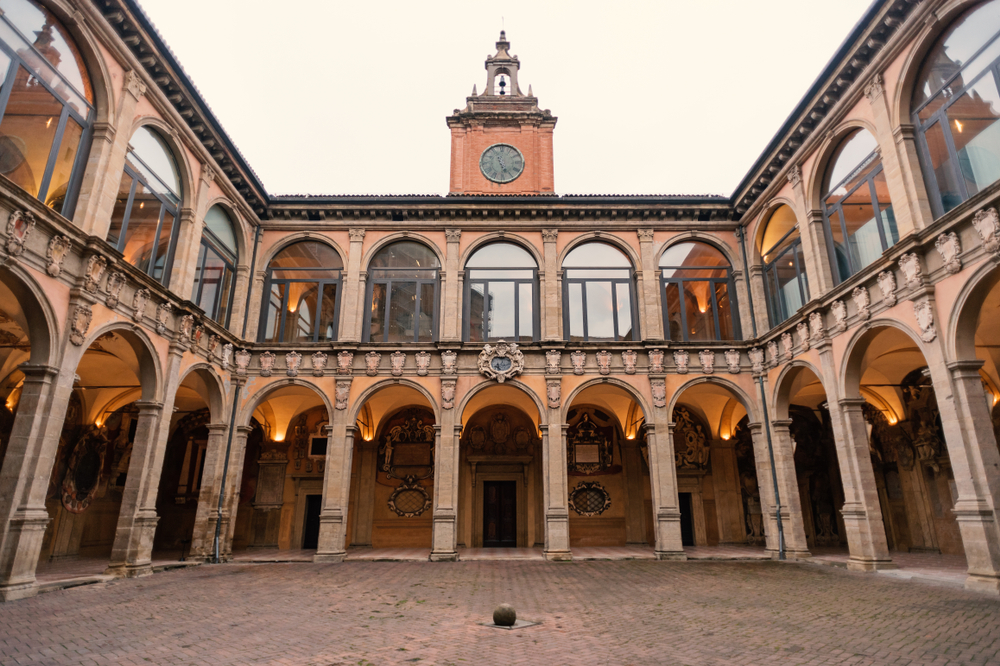
Dating back to the 16th century, the Archiginnasio was the main building of the University of Bologna, the oldest university in the world. On its first floor, you will find the Teatro Anatomico. Built by Antonio Levanti in 1636, it was initially used for anatomy lectures. Students would have found a large marble slab in the centre of the room on which a body would be laid out for dissection, with wooden seating arranged around the sides almost like an amphitheatre. There’s even a spy hole in the walls though reflecting the fact that the church was keen to ensure that nothing too progressive was being taught!
Unfortunately the building suffered substantial damage in WWII due to Allied bombing but it was meticulously restored so that these days visitors can explore the theatre for themselves. Look out for the numerous sculptures that adorn the walls representing doctors along with busts of key figures in history including Hippocrates and Galen who are ancient Greek and Roman physicians.
7. Search out the hidden canals
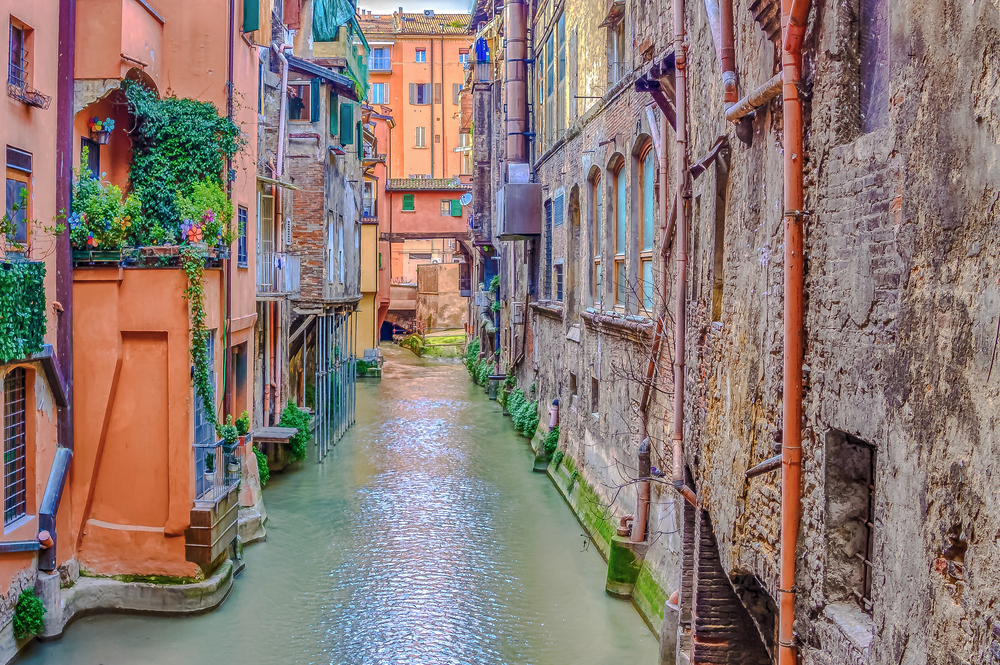
Just as Pisa isn’t the only Italian city to have a leaning tower, so Venice isn’t the only city to have canals. Bologna is actually home to over 60 km of them! One used to power Bologna’s silk industry and other cottage industries, these days most of the canals are impossible to spot as they have been covered over by building construction. However you can enjoy a tour of these hidden sights or head to the nearest tourist information and they will be able to point you to those that you can discover by yourself. Head to the Finestrella di Via Piella where you can get a picture perfect framed view of the canals from a window set into the wall.
8. Enjoy some retail therapy
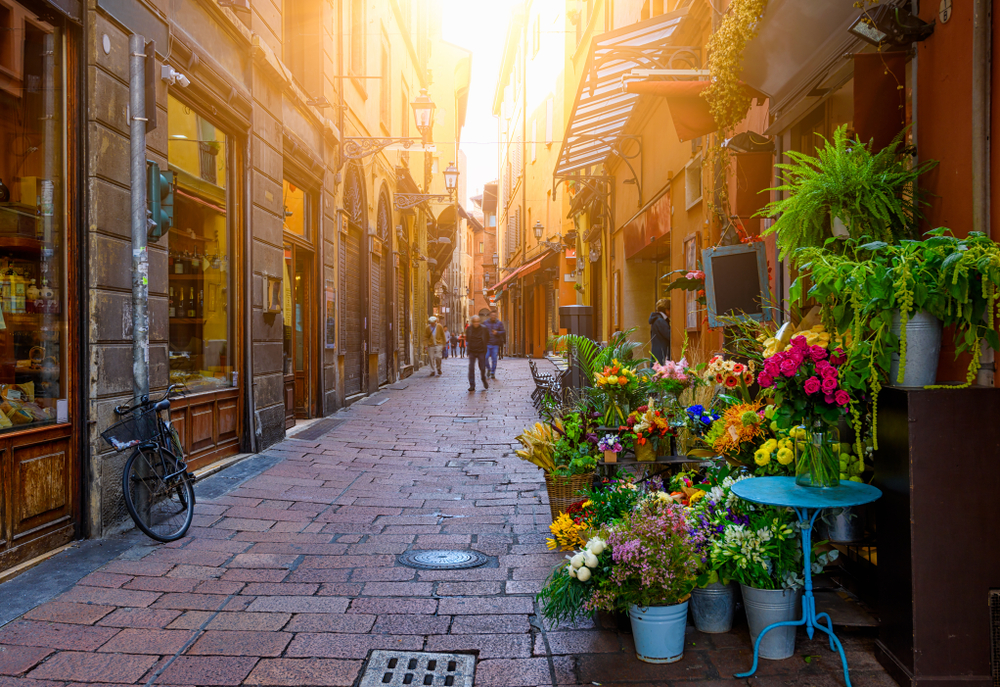
If you are a shopaholic, you’ll find plenty of shops and independent boutiques in Bologna. The four main shopping streets lead off the central Piazza Maggiore whilst the nearby Via dell’ Archiginnasio is where you’ll find most of the high end designer stores. A trip around the Quadrilatero district is ideal if you’re shopping for food as you’ll find numerous stalls here selling everything from fruit to fish and from seafood to salumi!
Even if you’re not a particular fan of shopping, you’ll love strolling around the picturesque streets of Bologna.
9. Eat!
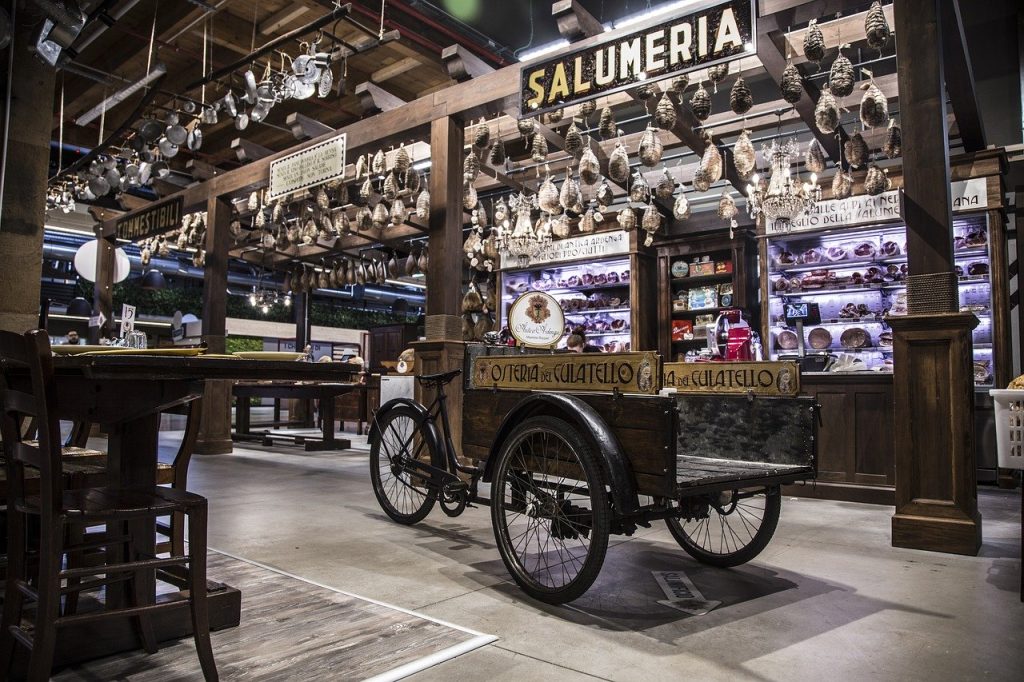
Bologna is a city of foodies. The city is home to a wealth of incredible restaurants and some fantastic food markets including the Mercato delle Erbe and the Mercato di Mezzo.
However, another option when you’re in Bologna is to head to what must be the first ever theme park revolving around food. FICO Eataly World is situated just outside the city and the concept revolves around educating visitors on the history, cultivation and production of Italian cuisine. It receives mixed reviews with some feeling that it takes business away from the authentic eateries in the heart of the town but we recommend you try it for yourself and make your own mind up. You’ll fine workshops, restaurants, shops, exhibitions and even rides to be enjoyed on site so that you experience Italian food all the way ‘from field to fork.’
10. Visit the Santuario di Santo Stefano

Known more affectionately as the ‘seven churches’ (sette chiese), the Santuario di Santo Stefano is actually a number of different buildings including churches, chapels and courtyards, each one dating back to a different period in time. It was nicknamed ‘Sette Chiese’ as there were originally seven churches here but only four remain today. These days, the whole complex includes the Church of the Crucifix (home to the bones of San Petronio), the Church of the Calvario, the Church of Saint Vitale and Saint Agricola, the Church of the Trinity, the Courtyard of Pilate and a museum. It’s a bit of a rabbit warren, a labyrinth of interconnecting religious structures that span centuries of time but it’s something not to be missed!


